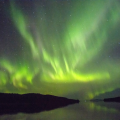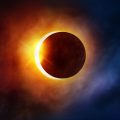Sky Spectacles and Technological Concerns
As the sun undergoes a peak in its 11-year activity cycle, Earth is currently experiencing the effects of a severe geomagnetic storm, which could disrupt more than just satellite operations. This dramatic space weather event, driven by massive solar eruptions, could potentially illuminate the skies with the aurora borealis, visible as far south as Northern California and Alabama.
Unprecedented Solar Flares Illuminate the Cosmos
Captured brilliantly by NASA’s Solar Dynamics Observatory, the recent solar flares on May 5 and 6 showcased the power of the sun in vivid detail. These images, highlighting the extreme ultraviolet light from the sun’s flares, emphasize the energetic intensity of these solar events.
The Science Behind the Storm
The National Oceanic and Atmospheric Administration (NOAA) has issued a severe geomagnetic storm warning following the detection of significant solar eruptions. These coronal mass ejections, originating from a large cluster of sunspots roughly 16 times the diameter of Earth, have sent a barrage of particles hurtling towards our planet. With the storm classified as G4—indicating severe intensity—its effects could be profound, impacting everything from power grids to navigation systems.
The Impact on Earth’s Infrastructure
Rob Steenburgh, a space scientist at NOAA’s Space Weather Prediction Center, explains that while the public may not need to take specific actions, the storm’s potential to disrupt critical infrastructure is significant. Companies and agencies managing these systems are advised to implement protective measures to minimize any potential damage.
A Rare Glimpse of the Northern Lights
This weekend may offer a rare spectacle—the northern lights could be visible in regions not typically privy to such displays, thanks to the strength of the current geomagnetic storm. However, viewing conditions will depend heavily on local weather, with some areas potentially obscured by cloud cover.
Looking Forward
As the sun continues to exhibit heightened activity, further solar flares and geomagnetic disturbances are expected. Although the current cluster of sunspots will soon rotate out of Earth’s direct line of sight, its potential to spark additional storms in the coming weeks remains a topic of close observation by scientists.
Safety Tips for Solar Viewing
For those hoping to spot sunspots during daylight, it is crucial to protect your eyes. Utilizing proper solar viewing glasses can allow for safe observation of these fascinating solar features.
As we navigate this period of intense solar activity, the ability to witness the beauty of the aurora borealis juxtaposed against the potential technological disruptions serves as a stark reminder of our planet’s vulnerability to the sun’s whims.






